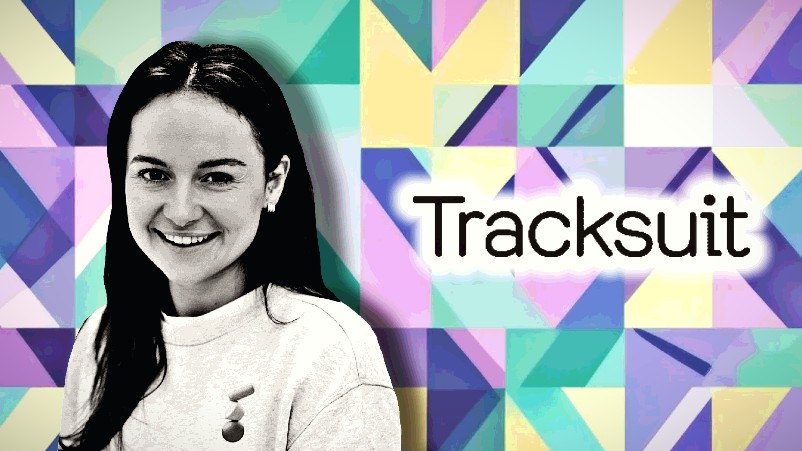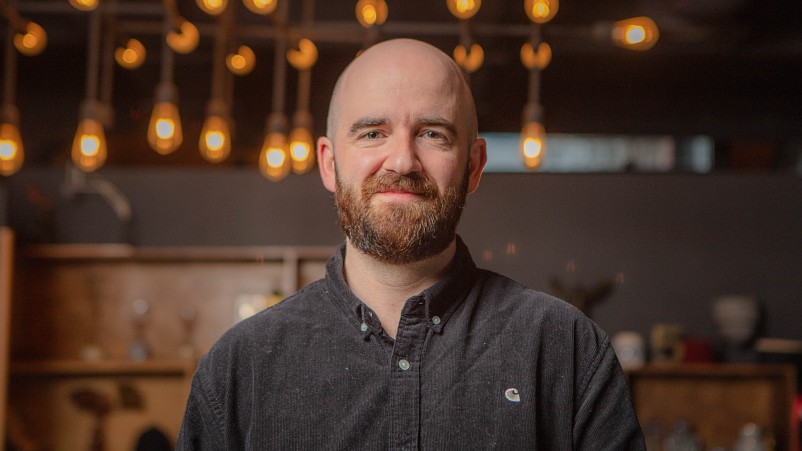Taking the long view: Tracksuit puts content marketing at the heart of its strategy; directly attributes sales to storytelling like its Barbie campaign which brought in $300k. The trick is patience says marketing head Mikayla Hopkins

One of the great ironies (and frustrations) for Mikayla Hopkins, head of marketing and employee number two at brand tracking platform Tracksuit, is that as a B2B marketer, she can't use her own platform, which is tailored to B2C brands. Hopkins and her team, however, have developed a different superpower: The ability to attribute content to conversions and storytelling into sales. For instance, a clever piece of Guerilla Marketing aligned with the launch of the Barbie Movie pulled in $300k. The trick is patience, says Hopkins, who urges her peers in B2B to extend the attribution window to really understand the impact of content marketing. It's also about recognising content isn't just case studies and whitepapers. One of Tracksuit's top content marketing performers is a calculator that helps brands determine the best split between brand and performance.
What you need to know
- Brand tracking platform Tracksuit is a rare beast in the Australian B2B marketing world - it's a big believer in the power of brand marketing through content to capture 95 per cent of customers who are not in market today.
- Head of marketing Mikayla Hopkins says free tools and great storytelling have built a robust pipeline that simply would not exist if the focus was all on performance.
- Content marketing was prioritised from the get-go says Hopkins, who is also employee number 2 at the firm.
- Tracksuit's approach which prioritises the “long and the short” in the world of Binet and Field, has not only driven millions in the pipeline, it also helped create a B2B brand that walks and talks like a consumer brand.
- By using tools like Hubspot, Tracksuit not only tracks the dollars it's generating but also understands which content types convert the quickest into sales.
If we're the loudest advocate for that pain, the moment somebody experiences that problem or that pain point, they're going to initially associate that moment with Tracksuit. That is the link and the anchor that we're trying to create.
True story: The B2C marketing director, let’s call her Claire, found an online calculator from brand tracking platform Tracksuit via Google that helped her calculate the best allocation of marketing budget aka Les Binet and Peter Field’s Long and Short philosophy in January 2023.
Impressed by the experience – and the information with which it equipped her – she then subscribed to a newsletter. Those actions pinged back inside Tracksuit’s marketing department and she was flagged for nurturing across multi-channel content marketing.
According to Mikayla Hopkins head of marketing, and employee number two at Tracksuit, “Those first interactions happened in January 2023 and she signed a contract with Tracksuit in March 2024, one year and two months after her first interaction with a piece of content. While this is so much longer than an average deal cycle, which is closer to [75 days for a case study], it's an indication of the way we create content with a longtail view.”
Tracksuit is a brand tracking platform designed to help companies continuously monitor and understand how their brand is perceived in the market. It is designed to provide marketing executives with real-time insights into brand health, including metrics like brand awareness, consideration and preference.
Or, in Hopkins's own words, “Tracksuit is beautiful, affordable, always on brand tracking … that's a bunch of buzzwords, but what that means is we go out and we survey 10s of 1000s of customers, or real people every single week to help marketers and brand leaders understand how people think and feel about their brand. So it's market research, but it's done in a much more simple, beautiful, easy-to-understand way.”
Ironically, Hopkins as a B2B marketer can’t use her own tool which is focused on B2C, something she acknowledges is very frustrating. Instead, she uses platforms such as Hubspot to track the effectiveness of the market, especially content marketing.
Content first marketing
“From the get-go, we prioritised content as the backbone of our entire marketing strategy, and that is because we believe that marketers have two jobs. Firstly, to convert existing demand in the short term - conversion metrics and conversion marketing - and then also build a future demand amongst a wider group of people who have not entered the category yet, but who will do so later," Hopkins explains.
Unlike many B2B marketers in Australia – and especially in technology marketing – she not only believes and understands the power of the brand, but is free to act on it.
"The core problem I've seen is when people prioritise paid as a distribution lever they harvest that very small amount of demand in the short term, but then quickly realise they haven't done a critical job of building future demand through channels like content.”
Tracksuit's approach, which prioritises the “long and the short” in the world of Binet and Field, “Has helped us drive millions and millions of dollars in the pipeline. And it's also allowed us to create a brand that, whilst we are B2B, we get a walk and talk like a consumer brand, and we've been very deliberate about that.”
“In a nutshell that’s why we've gone content first. And that's been the pathway to create a fantastic brand that is absolutely cutting through the noise and making a bit of buzz in the market," Hopkins says.
The firm takes a full-funnel view of content as it seeks to deeply understand what Hopkins calls the three key pillars of her customers and the market:
“That’s their pains, their fears, their dreams. With pains, what makes the job harder than it needs to be? Fears is about what keeps them up at night, then dreams is what are their career aspirations? What do they want for their function? What do they want for the business?
“We map out those three pillars by creating content that solves problems that directly hit one of those three pillars. If we're the loudest advocate for that pain, the moment somebody experiences that problem or that pain point, they're going to initially associate that moment with Tracksuit. That is the link and the anchor we're trying to create.”
Tool kits
There’s a lot more to content marketing than case studies and whitepapers, as the Tracksuit experience attests. For instance, one of Tracksuit's most popular pieces of content marketing is a tool kit that targets the mid-funnel. In particular, it provides a free budget calculator Hopkins tells Mi3, “Has driven the most pipeline for us”.
“Using the research of Peter Field and Les Binet, we've been able to plug in their 60/40, 80/20, rule and all of the math behind into it. You put in a couple of inputs, such as your vertical-type business, and a couple of additional pieces," Hopkins says.
The calculator then provides the best split of long and short, brand and demand. It's an interactive, free tool people can use in exchange for contact details.
“We then send them through a nurture journey depending on the kind of vertical they are working in, which so solves additional pains, fears or dreams," she says. “It's fun, it's interactive, and like everything we do, it needs to elicit joy. We're very deliberate that when we show up, we're playful, we're spirited, and we're intelligent. You will see that through all of the content we've ever shared anywhere.”
Just as importantly, it’s a free tool helping marketers make the argument about spending allocations to the CFO. “They can say, ‘Hey, based on strong evidence and good marketing academia, this is the level of investment that we should be putting in couple funnel or for building brand’,” Hopkins says.
A lot of Tracksuit’s customers use the budget calculator to pitch for more budget, Hopkins says.
“So they use that, and they also use the Tracksuit data if they're not growing awareness or they're growing but need to take a step out. Brand tracking we provide allows them to track fundamentals, right? So your unaided or your unprompted awareness, your awareness, your consideration, claimed usage and preference, then a bunch of qual that comes with that. What they can do is go and use that tool to prove out the need to be investing, or doubling down on marketing budget to be able to actually grow and compete with the incumbents in the industry."
Rude health, then a pause
Content marketing enjoyed rude health and growth in its share of the budget during the first half of the last decade, but it started to plateau, as marketers schooled in the measurability of channels like search and display advertising started hitting up against the demands for accountability.
That is an area that has improved significantly over the last decade according to Hubspot's senior marketing director APAC, Kat Warboys. She told Mi3, "It has been helped by other developments in the marketing space around marketing automation technology and the CRM.
Tracking is easier and more effective these days, and Warboys said. "It's much easier for teams to be able to really demonstrate very clear metrics on driving actual pipeline. These advances in tracking abilities have enabled us to actually prove that out a lot better and attractive team even say, like the results of which actually secure the more brand budget internally. For [someone like] the Tracksuit team the results actually secure more budget internally, and that's something we see across the industry."
It's so nice to see and be able to prove that through checks like brand health.
Turning storytelling into sales
Never discount the power of a good story. Last year, for instance, the Tracksuit team saw a great opportunity to piggyback on the publicity around the Barbie Movie.
“This was my absolute favourite campaign from last year," Hopkins says. “Tracksuit decided to hijack the biggest marketing moment of the year, which was Barbie and all of the movie marketing going down around it. We took a bet it was going to blow up because we could see the rumbling and the groundswell of how excited everybody was around it."
A plan was hatched to track Barbie in all core markets. “That included the awareness of Barbie, consideration, preference, and so forth. And then also general sentiment such as when people think of the brand Barbie, what comes to mind?"
That also involved getting feedback about what Hopkins called the nostalgic element of Barbie. “We tracked against core other toy brands like Lego, for example. And what we could really see is they had strong awareness, but lacked the preference piece. This was pre-movie," she says.
With that insight, the team decided to wrap a full content campaign around the moment the Barbie movie was released.
“We went through an earned, owned, paid structure. We initially had amazing findings with Barbie, and we released that content through all of our PR channels that garnered nationwide coverage around the general market sentiment - could Barbie reinvent themselves with a new age approach to a doll that had previously been perceived as a little outdated?”
Tracksuit also hosted private screenings and used its content to bolster that experiential moment of Barbie with customers. “It was just beautiful and such an incredible experience," says Hopkins.
The campaign revealed some important insights around the concept of future demand versus immediate conversion.
“We had significant engagement across our hero piece of content around the Barbie research. We had a million views, 15,000 likes, and 900 reposts on a specific LinkedIn post alone. We also garnered the attention of the Global Marketing Director at Barbie, which was just amazing," she adds. “We had a lot of eyeballs.
Patience, Barbie. Patience
"But if we measured that conversion immediately after that campaign launch, that case study was one of the lowest performing pieces at immediately converting customers to brand tracking," Hopkins continues.
Over a longer arc, the picture was very different. “We used HubSpot to track every single piece of content that was ever put out. The article had $300,000 worth of revenue associated with it, but not until five months later," she says.
“That’s a really important demonstration of why those windows, in terms of associated pipeline and revenue, need to be extended when you're launching a piece of content that is brand first, as opposed to directly bottom of the funnel.
“What is really fascinating in terms of using HubSpot to track which content is the most valuable, is we can very clearly identify our top three pieces of content; the brand benchmark tool, our calculator, and then our template. The next stage of that is all about case studies.”
Tracksuit can drill down further. "For example, if I look at Bondi Sands, which is obviously an iconic brand, they've done amazing things, and used Tracksuit to get from A to B. I can associate about $450,000 in the pipeline with that specific case study," says Hopkins.
Bondi Sands built its content marketing campaign around its partnership with The Australian Open. According to Sarah Morrison, Bondi Sands' Global Head of Brand and Content, "Being the official sunscreen partner was really important to us. We found it was rooted back into our brand purpose of living that Australian lifestyle, loving outdoors, and having a sports lifestyle."
The results back up Bondi Sands making the right call by teaming up with the Australian Open. Tracksuit's data shows an 8 per cent uplift in brand awareness, with consideration rising from 17 per cent per cent to 25 per cent. Not only that, Bondi Sands saw sales triple in the category year over year.
"It's so nice to see and be able to prove that through checks like brand health," Morrison says.
Bondi Sands has also doubled down on the work it does across digital and social media platforms. The goal is to broaden its market reach and deepen consumer engagement.
A key focus for Bondi Sands — especially in the self-tan and skincare markets — is TikTok. "We have enjoyed so much success with suncare, so we began looking for other categories. We see ourselves moving towards being a skin health brand and skincare is that natural next step for us, particularly with that Gen Z and Millennial audience that are skincare obsessed," Morrison says.
To that end, Bondi Sands created an account dedicated to skincare.
"You get skincare junkies who just love it and just want to see skincare content. That allowed us to focus solely on the new category, show the real before and afters, and focus on real skin. It was a unique space to fully highlight that."
Content frequency.
Tracksuit has also tracked optimum numbers of content to close a deal based on content type. “We've seen there's an average of 4.4 pieces of content touched before a deal is closed across 2024," says Hopkins.
Across different content types, Tracksuit has calculated the average time between content being viewed and a deal closing is 169 days for a tool or a template, 129 days for a blog or thought leadership piece, and 75 days for a case study.
Per Hopkins: “That is really dictating how we're going at building more beneficial content that helps people understand how to use Tracksuit, and how to be better brand builders."



